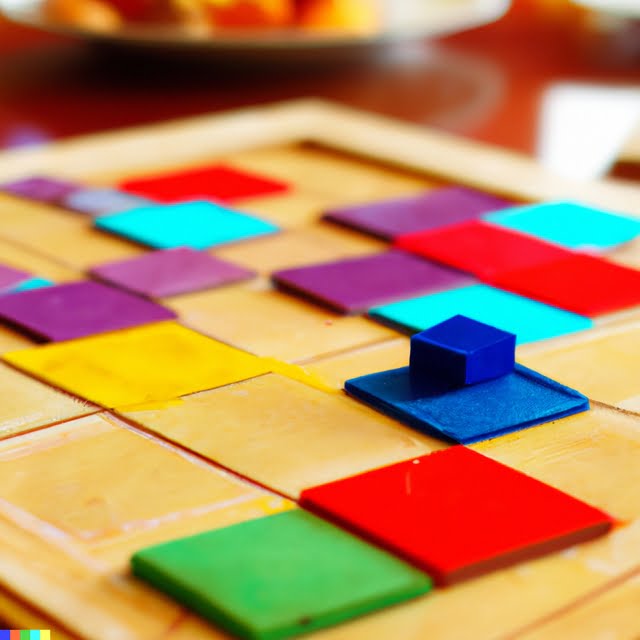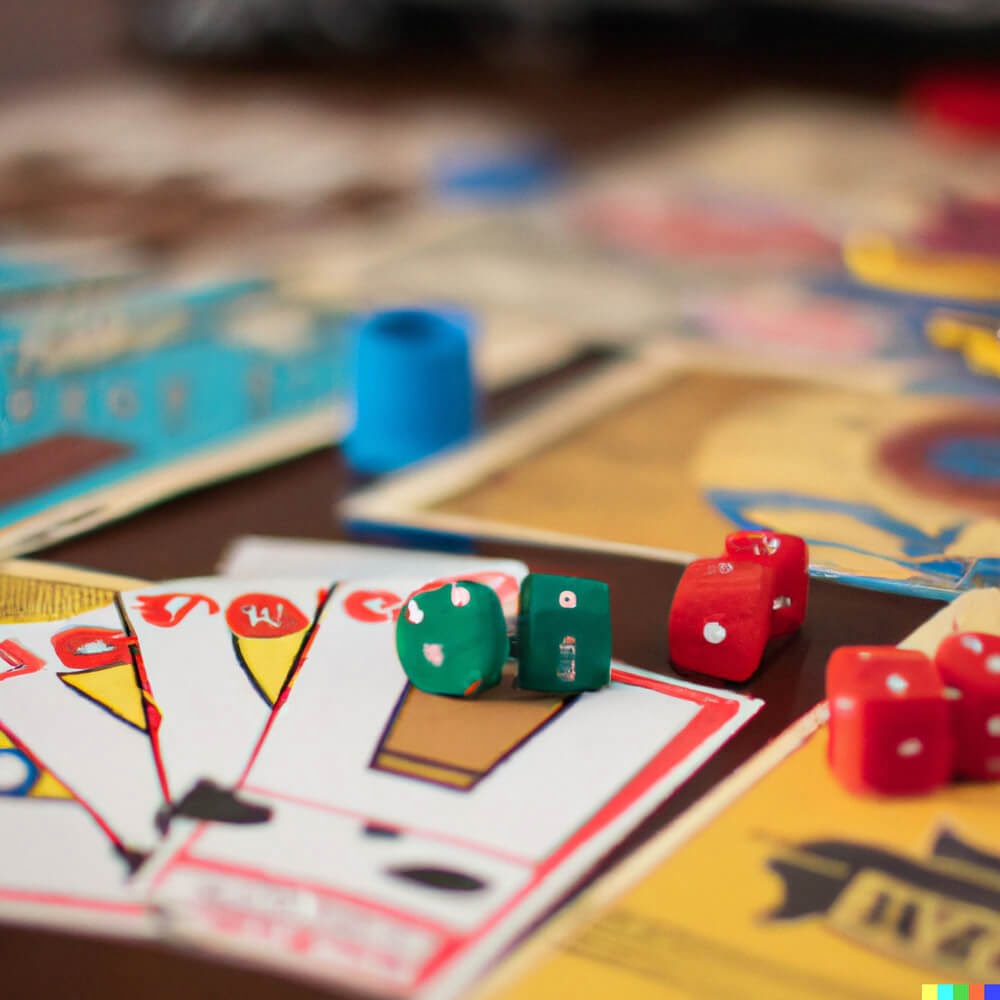Introduction
Creating a board game out of cardboard is an entertaining and creative way to pass the time. The materials you need are generally easy to find, giving you the opportunity to really let your imagination run wild. There are several different ways in which you can create a board game using cardboard. Perhaps the simplest way is to draw directly onto sheets of cardboard or cardstock paper using pens, markers or other drawing media. You could first decide what type of game you’d like to make by plotting out all your ideas on paper, then take that design and reproduce it in as much detail as possible onto the cardboard/cardstock. Another option would be to cut out pieces from existing boards or game sets, then reassemble them into a completely new game layout, either by yourself or with others. Alternatively, there is also a wide variety of pre-made templates available online consisting of various sizes and shapes for making custom board games that may just need some personal touch added later on. Once all the pieces have been cut and arranged into the desired design on one large piece of cardboard/cardstock, simply tape it all together securely at the edges and voilà – a brand new board game made entirely from cardboard!
Choosing Your Materials
When making a board game out of cardboard, you must first choose the right type of material. Cardboard is an excellent material to use due to its durability and flexibility. You have several options when it comes to the type of cardboard you can use in your project.
One type of cardboard is corrugated cardboard, which is often used in cardboard boxes, packaging materials, and display stands. It has fluted paper layers on either side with a middle sheet that gives it strength and stability. This makes it perfect for creating boards to place game pieces on.
Another type of cardboard you may want to consider is chipboard, which has a stiffer structure than corrugated cardboard since it lacks the ridged layers of fluting that corrugated materials feature. Chipboard can be great for making the game box itself or for components such as game cards and pieces that need to be easily handled during gameplay.
You can also find recycled or reclaimed LDF (Low Density Fiber) board from various businesses across the country who are more than willing to donate their leftover materials into something special like your custom-made board game. Unlike regular corrugate and chipboard, this type of material is recyclable and eco-friendly while still providing enough rigidity for your design needs.
Finally, you should think about using foam core if you’re looking for something really lightweight yet sturdy enough to bear the weight of multiple gaming pieces placed upon them over long periods of time without damage or deformation. Foam core consists mainly air pockets thus giving it both strength and reduced weight which allows easy transportation after construction is complete.
Preparing the Cardboard
The most important part of preparing your cardboard for your board game is to have the right tools and techniques. First, you will need an appropriate cutting surface and cutter that can effectively slice through the material. You should try to use a self-healing mat if available ” this typically prevents damage to the surrounding surface below when cutting. If a mat is not available, be sure to lay down some newspaper or other protective layer before hand.
To safely and effectively cut through the cardboard, it is best to use a craft knife or utility knife. Be sure to take your time and keep a steady hand when making cuts, as this will help minimize mistakes when creating intricate pieces for your game board. After making clean cuts, consider eliminating edges with sand paper. This can even out any rough cuts and make them look polished for your gaming adventure!
Crafting the Game Pieces
Making game pieces out of corrugated cardboard is a fun and easy way to create a personalized board game. You can make traditional game pieces, or you can customize them to your specific liking. To craft the perfect pieces for your board game, you will need some basic tools such as scissors or an X-Acto knife, straight edge ruler and spray adhesive. You will also need some corrugated cardboard sheets, paint, marker and other decorative supplies.
Begin by choosing a type of design or shape you would like the piece to be”you can use any traditional game piece shape like a crown, castle, heart, diamond etc.”then trace it onto the corrugated cardboard sheet using your ruler and marker. Cut out each shape carefully with your X-Acto knife and set aside each individual piece that you have cut out. Then use spray adhesive to attach two pieces of the same size cardboards together”this will double their strength and durability.
Next step is to customize your pieces with details using paints or markers; paint on stripes, polka dots or any designs that you desire! These details will give personality and color to each playing piece making it special and unique from every angle. Let all details dry completely before moving on with the next steps in order for paint or markers to not smudge away during assembling!
Finally, attach different decorative elements like ribbons bows or small jewels in order for your pieces to look more professional; glue these additional elements into place if needed with hot glue gun for an even better result! That’s it “your personalized gaming pieces are now ready for use!
Decorating the Game
Painting the game pieces is a great way to make them interesting and unique. Use acrylic paints and foam brushes to create unique designs or patterns on the cardboard pieces. Consider using coordinating colors for a fun but cohesive look. Remember that painting over details may cause them to smudge or get lost. If you want sharper lines and details, use stencils or draw directly onto the cardboard with permanent markers. If you prefer more muted colors, try using paint markers or watercolors for a softer effect.
Adding stickers is another fun way to add personality to your board game pieces. Stickers come in an endless variety of shapes, sizes, and designs so there’s sure to be one that fits your concept perfectly! Simply peel away the backing of a sticker and press it against the piece of cardboarnd until it’s attached. For extra durability, seal each sticker with mod podge or spray varnish after sticking on the board game pieces.
Assembling the Game
Once you have all of your game pieces and have completed the construction of the board, it is time to put them together. Start by setting up the board on a flat surface. Make sure it is well supported and won’t slip or move around during play. Next, attach all the game pieces to the board with either glue or double sided tape. If you want the pieces to be extra secure then place a small piece of cardboard behind each one. Then line up all the pieces in order, following any instructions that came with them so they are arranged correctly for your board game. Finally, add any indicators such as playing tokens, score markers and dice so they are ready when players want to start playing your homemade game!
Finishing the Game
Once you have the game pieces and playing board ready to go, it’s time to move on to some of the finishing touches. Consider creating labels or signs for each of your spaces so that players know what’s ahead when they land on them. You can either print out simple signs or hand-write them. You might also want to consider adding a spinning component such as a wheel or rotary feature for added fun for players. Creating a carriage for the pieces to move through can also be an enjoyable addition, as well as secret compartments in which pieces can be stashed away for added suspense. With these options and more, you can personalize your cardboard board game however you wish!
Testing and Playing the Game
Testing and playing the game is an essential part in making a fun and entertaining board game from cardboard. Before establishing the rules of the game, you will need to test them out with a few players. This way, you can quickly identify any problems that may arise, any tedious rules that have not been well thought through and other areas where creativity can be enhanced to make the game more enjoyable for all players.
During this process, pay attention to feedback from each player as it will help you adjust the game accordingly. Ask each person what they like or dislike about it, if it’s too long or too short, exactly how players move around the board or take turns ” anything which will enhance self-learning during gameplay. It’s also beneficial to ask suggestions on how they think certain aspects of the game should work or be approached differently.
If possible, consider running through different scenarios during play testing so you get an idea of how different strategies could affect overall outcomes. Also, observe players as they interact and familiarise themselves with the game mechanics ” this will give great insight into which areas require further clarification and explanation when briefing other participants who might be unfamiliar with the premise of your board game.
Working collaboratively with other players during refinement is crucial in making a boardgame out of cardboard enjoyable for everyone involved. Having their support in its development ensures it stays entertaining while enabling everybody to learn new techniques that could ultimately improve gameplay in future sessions
Conclusion
Making a board game out of cardboard is an easy and fun project that can be done in just a few hours. By using basic scissors, markers, rulers, and other materials, it is possible to create a unique and creative boardgame. This method requires multiple key steps: sketching a design on the cardboard, cutting out designs with the scissors according to the recorded measurements, reinforcing sections with tape or glue as necessary, writing out rules and instructions clearly on the board itself and/or packaging, and then adding dice, playing pieces and other components. To further improve the overall design of the board game additional materials such as paint may be used to make it look more polished. Once everything has been constructed properly it is time to test your game to make sure it is playable!
In conclusion, creating a cardboard board game requires following fundamental steps: drawing up a design plan before beginning construction; marking all relevant measurements; creating reinforcements where necessary with tape or glue; applying instructions clearly to both the playing surface and packaging material if needed; finally finishing off by including any other essential components such as dice or player pieces. With some practice you are sure to see success in crafting your very own cardboard board game – a great activity to work on at home that can also result in hours of fun afterwards! Further exploration could include taking this project one step further by adding visual effects with paint or constructing various shaped boards instead of traditional squares or rectangles. With this knowledge anyone can transform their living room into their very own DIY gaming paradise!

I love playing all kinds of games – from classics like Monopoly to modern favourites like Ticket to Ride.
I created this blog as a way to share my love of board games with others, and provide information on the latest releases and news in the industry.





